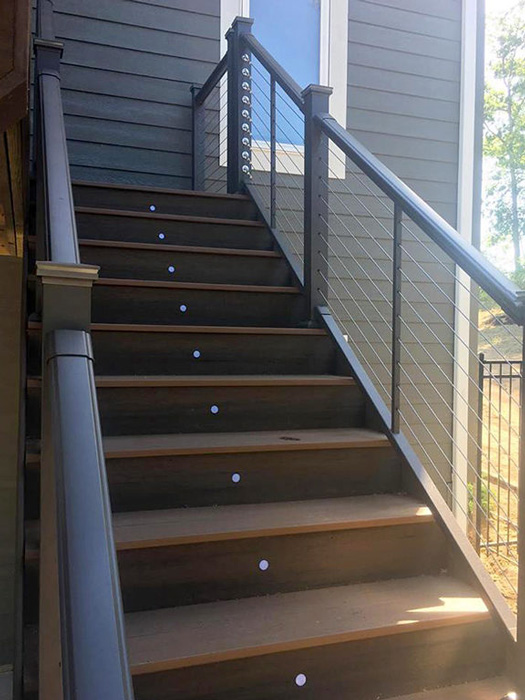Cable railing is a beautiful, stylish, and convenient option for both indoor and outdoor spaces. They are durable, low maintenance, and offer limited visual distraction. However, the primary function of railing systems is safety. Whether you’re installing cable railing on a staircase, balcony, or deck, you must consider many factors. This includes structural elements, location of the project, materials, and compliance with standardized building codes. Understanding these factors before or during the planning stages can help you avoid bottlenecks and get the best results.
Cable railing code requirements are determined by local, city, or state codes and the International Residential Code (IRS). It’s important to verify your project details with a local code officer before finalizing the design and installing the railing.
Cable Railing Safety and Code Facts
Sphere Rule
Sphere rules apply to all railing systems. The code states that the spacing between cables (balustrade) cannot allow a 4-inch sphere to penetrate through the cables with reasonably applied force. However, stairs are an exception and have a 6-inch sphere rule between the bottom rail and the step treads.
Since cable railing does not have the same rigidity of steel balusters or wood, it can defect (open up) when pressure is applied. To meet code requirements, the cables should be installed close enough together to ensure that a 4-inch sphere can’t pass through even if the cables are stretched. Install Atlantis Rail cable systems with a maximum 3-inch spacing between cables to avoid any deflection exceeding 4-inches.
Post Spacing
The other important aspect of cable railing installation is post spacing. Steel, aluminum, and wood posts can be used in a cable railing system. To ensure your system performs well, be sure to space posts or cable stabilizers no more than 4 feet apart. The rule applies to both corner and intermediate posts.
Properly tensioned cables with correctly spaced posts will typically deflect up to 25% under reasonable pressure. As a result, the deflection will create a space of 3.75-inches. The 4 ft spacing requirement ensures your cables will remain properly tensioned, while still meeting the 4-inch sphere rule.
Tensioning
Tensioning is a crucial component that will allow you to create a safe and sturdy cable railing system. Applied tension impacts the load-bearing capability of the cable in case something or someone runs into it. Tension keeps the cable rigid enough to meet sphere rule requirements. Different materials have different stretch properties. For instance, aluminum stretches more than stainless steel and the recommended cable configuration is 1 X 19. This means that 19 wires weave into one stronger structure for strength and durability.
To ensure proper tension of the cables, follow the tensioning diagram, and do not over-tension. With Atlantis Rail cable systems, it’s easy to create the correct amount of tension. Furthermore, our posts are strong enough to withstand all forces.

Handrail and Guardrail Height
Guardrails and handrails are usually confused as being the same thing in a railing system. A handrail is the graspable component of a railing system that helps people ascend or descend a staircase. Code requires handrails to be sturdy enough to support a person’s weight and high enough to prevent someone from falling over. Handrails should return into a wall and be mounted between 34 and 38 inches. Also, handrails need sufficient graspability.
Guardrails are the structural element that sits atop a railing system. The code requires guardrails for a balcony or deck with 30 inches above grade, or for stairs with 4 or more risers. In residential structures, guardrails should be a minimum of 36 inches.
Contact Atlantis Rail
With the right combination of cable runs, posts, and rails, you can create a safe, attractive, and code-compliant railing system. We develop the entire line of Atlantis Rail cable railing systems with cable railing safety and code requirements in mind. Contact us today to learn more about our cable products.